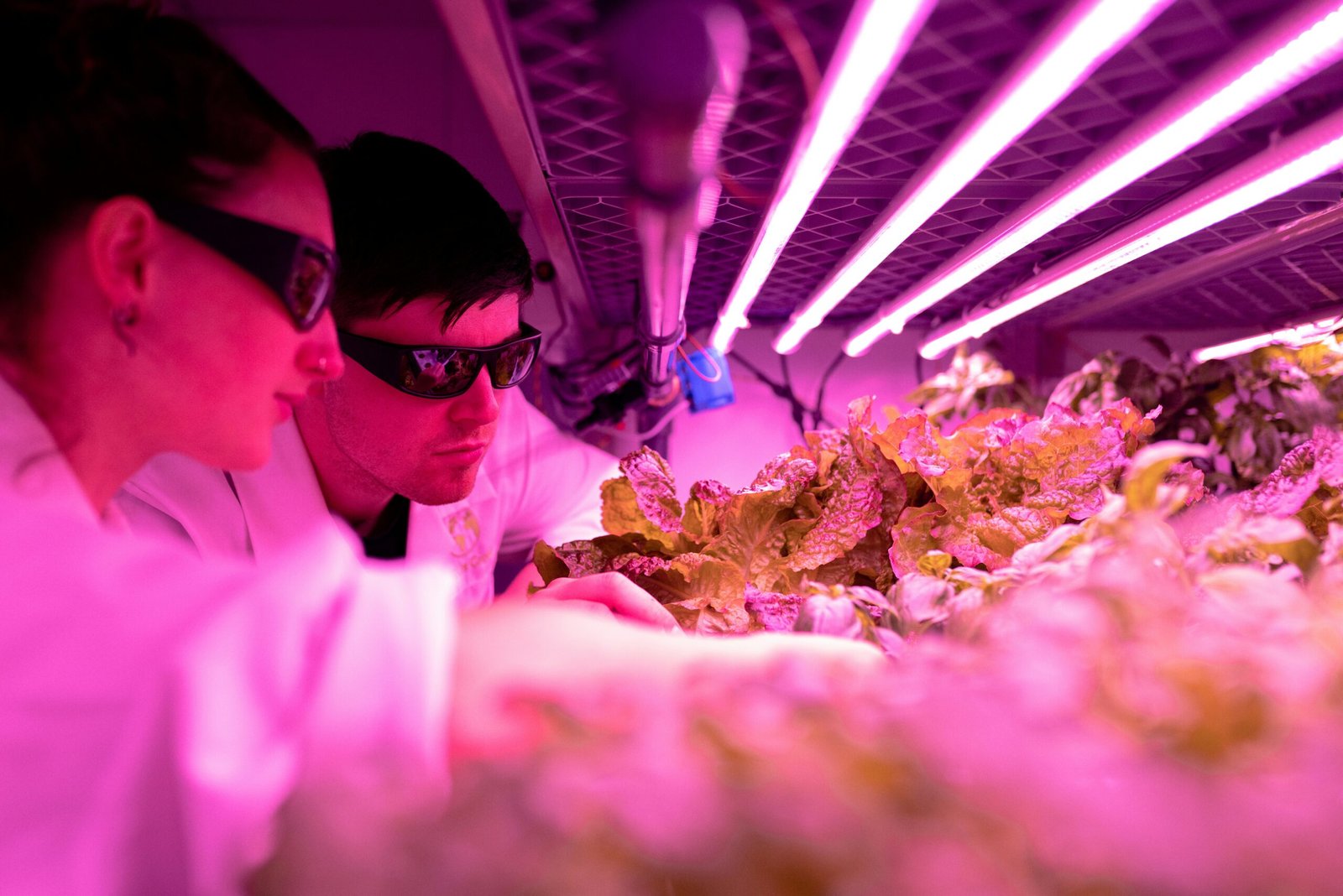Introduction
The growing demand for food security in the face of increasing pest and disease pressures has propelled genomic technologies to the forefront of agricultural innovation. These tools offer precise, efficient, and environmentally sustainable solutions to enhance crop resilience. Over recent decades, agricultural losses due to pests and diseases have intensified, exacerbated by climate change and global trade. Addressing these challenges requires cutting-edge scientific interventions, with genomics leading the charge. From CRISPR-Cas systems to RNA interference (RNAi), R gene stacking, and synthetic biology, genomics advancements are transforming how we combat agricultural challenges while promoting sustainability and environmental health.
The Role of CRISPR-Cas Systems
CRISPR-Cas9 and Cas12: Precision in Gene Editing
CRISPR-Cas9, the most widely recognized gene-editing tool, allows for targeted modifications in plant genomes to improve resistance traits. Recent advancements have introduced CRISPR-Cas12, which offers enhanced specificity and efficiency in targeting genetic sequences. These tools can deactivate susceptibility genes or introduce resistance genes, minimizing crop losses from pests and diseases (1).
Expanding the Toolkit: Cas13 and Beyond
Cas13, another member of the CRISPR family, targets RNA instead of DNA, offering the potential for combating RNA viruses that threaten crops. Combining different CRISPR systems allows for more comprehensive protection strategies. Additionally, Cas9 variants with base-editing capabilities enable precise nucleotide changes without inducing double-stranded breaks, further enhancing the scope of genetic interventions.
Environmental Benefits
CRISPR-based methods reduce reliance on chemical pesticides, thereby lowering environmental pollution. Gene-edited crops are also more adaptable to climate stressors, promoting sustainable agriculture.
Case Study: Powdery Mildew Resistance in Wheat
Using CRISPR-Cas9, scientists have successfully edited susceptibility genes in wheat, rendering it resistant to powdery mildew. This breakthrough reduces the need for fungicide applications, directly benefiting the environment.
RNA Interference (RNAi): Silencing Pests and Pathogens
RNAi technology exploits natural RNA pathways to silence genes in pests and pathogens. For instance, double-stranded RNA can disrupt essential genes in pests, effectively controlling infestations without harming non-target organisms (2).
Case Study: RNAi in Cotton
In cotton, RNAi has been successfully applied to manage bollworm infestations, reducing crop damage significantly while avoiding the environmental drawbacks of chemical sprays. Moreover, RNAi constructs have been developed to combat viral infections in cassava, showcasing its versatility.
Genome-Wide Association Studies (GWAS): Identifying Resistance Genes
GWAS identifies genetic markers linked to resistance traits across diverse plant populations. This method accelerates breeding programs by pinpointing genes that can be harnessed to improve pest and disease resistance (3).
Applications in Wheat
In wheat, GWAS has revealed loci associated with resistance to rust diseases, enabling breeders to develop improved cultivars that withstand these devastating pathogens. Similar approaches in rice have uncovered genes conferring resistance to bacterial blight, underscoring the potential of GWAS in diverse crops.
R Gene Stacking: Building Durable Resistance
Combining multiple R genes into a single cultivar enhances the durability of resistance. This method is particularly effective against pathogens that evolve rapidly to overcome single-gene defenses (4).
Example: Stacked R Genes in Tomato
Tomato plants with stacked R genes exhibit resistance to late blight, a notorious disease caused by Phytophthora infestans. These cultivars have reduced reliance on fungicides, contributing to more sustainable farming practices. In rice, stacking Xa21 and Xa27 genes has provided long-lasting resistance to bacterial leaf blight.
Exploring Environmentally Friendly Alternatives
Biocontrol Agents
Biocontrol agents, such as beneficial fungi and bacteria, offer a natural way to manage pests and diseases. For example, Bacillus subtilis is used to combat fungal pathogens in crops like strawberries and tomatoes (5). Trichoderma species are also widely used to enhance plant immunity and suppress soil-borne pathogens.
Genetic Mechanisms Underlying Resistance
Plants naturally possess complex molecular networks to combat stress. Mechanisms include:
- Pattern Recognition Receptors (PRRs): These proteins detect pathogen-associated molecular patterns (PAMPs), triggering immune responses.
- Effector-Triggered Immunity (ETI): R genes detect specific pathogen effectors, activating localized cell death to contain infections.
- Phytohormones: Hormones like salicylic acid and jasmonic acid mediate systemic resistance.
CRISPR and PRR Enhancement
Recent studies have used CRISPR to enhance PRR functionality in rice, leading to broad-spectrum disease resistance. These advancements highlight the synergy between molecular biology and gene-editing technologies.
Biotechnology: Future Directions and Innovations
Synthetic Biology
Synthetic biology integrates novel resistance pathways into plants, offering new dimensions of pest and disease management. This includes designing synthetic R genes tailored to target emerging pathogens. For example, engineered metabolic pathways in tobacco plants have shown increased resistance to root-knot nematodes.
Precision Agriculture
Combining genomic tools with precision agriculture enhances the effectiveness of interventions. For instance, CRISPR-edited crops can be monitored with drones and sensors to optimize field management.
Case Study: Golden Rice
Golden Rice, engineered to contain beta-carotene, also exhibits improved resilience against bacterial leaf blight. This dual benefit underscores the potential of biotech innovations to address multiple challenges simultaneously (6).
Challenges and Ethical Considerations
While genomic technologies offer immense promise, challenges remain, including public acceptance, regulatory hurdles, and the risk of off-target effects. Ethical considerations must guide the deployment of these tools to ensure equitable access and long-term sustainability.
Conclusion
Genomic approaches represent a paradigm shift in agriculture, providing precise, environmentally friendly solutions to combat pests and diseases. By leveraging tools like CRISPR-Cas9, Cas12, Cas13, RNAi, and GWAS, alongside traditional methods, we can build a resilient agricultural future. With continued research and innovation, the dream of sustainable, secure, and efficient food systems is within reach.
References
- CRISPR-Cas9 in Crop Improvement
- RNA Interference in Plant Protection
- Genome-Wide Association Studies
- R Gene Stacking Strategies
- Biocontrol Agents in Agriculture
- Golden Rice Project





